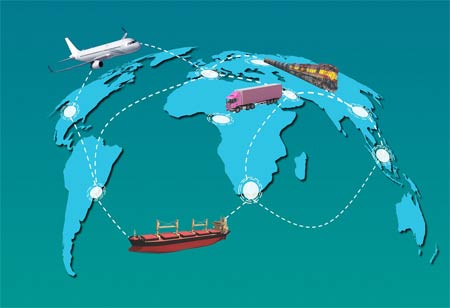THANK YOU FOR SUBSCRIBING
THANK YOU FOR SUBSCRIBING

By
Logistics Transportation Review | Thursday, February 29, 2024
Stay ahead of the industry with exclusive feature stories on the top companies, expert insights and the latest news delivered straight to your inbox. Subscribe today.
This article explores how same-day delivery revolutionizes parcel logistics, allowing customers to receive their parcels quickly and conveniently.
Fremont, CA: Same-day delivery can completely alter our purchasing habits. It combines the immediateness of physical stores with the ease of online shopping. With same-day delivery offering consumers a compelling value proposition, demand is predicted to rise dramatically.
Reduced delivery times will help online merchants since instantaneous product availability strengthens their competitive edge over brick-and-mortar stores. It adds to the allure of online shopping's wider selection, increased convenience, and frequently lower rates. Conversely, physical merchants have a rare chance to offer same-day delivery on a large scale by fusing an e-commerce channel with their current local infrastructure. Using a multichannel strategy, they could regain consumers who are turning more and more towards internet purchasing.
To meet the need for logistics, three operating models have been developed. The first is made up of established package logistics companies that offer a second delivery wave. Second, businesses can offer scheduled or rapid delivery by utilizing broker networks that give them access to available courier capacity. Third, big-box stores keep their fleet of vehicles to manage same-day delivery. Over time, parcel logistics providers can offer integrated solutions that cover order fulfillment, delivery, and return at the lowest possible cost.
There are a ton of opportunities ahead. Logistics companies must reposition themselves for the impending change and modify their current networks appropriately.
Same-Day Delivery Blends the Ease of Internet Purchasing With the Prompt Product Availability of Physical Stores:
The final delivery stage to the customer, or the "last mile," is becoming more significant as the percentage of online retail grows. The latter has emerged as one of the main forces behind B2C package logistics, accelerating the evolution of the service offering toward increased convenience. In addition to other choices for collection and delivery (such as parcel shops and locker boxes), the primary driving force is speed. In industrialized nations, same-day delivery within two or three days is the current industry standard; nevertheless, inexpensive same-day delivery is the next evolutionary step.
From the Standpoint of the Customer: Willingness to Pay for Same-Day Delivery—If the Price is Correct:
Consumer awareness of same-day delivery varies by nation. Suppose same-day delivery costs less than 7 to 8 percent of the basket value. In that case, consumers find it appealing. A conversion rate of over 30 percent once the delivery cost exceeds 7 percent of the total amount spent or the basket value. All product categories have the same conversion rate.
Retailer Perspective: Same-Day Delivery as a Catalyst for Online Sales:
The majority of B2C shipments originate from online shops. Their competitive position against stationery shops is greatly enhanced by instantaneous product access. Thus, they have a great interest in cutting down on delivery times. Online retailers will be able to grow their portion of the retail market and promote the selling of product categories that are normally not sold online with same-day delivery.
All merchants have a great chance to raise the quality of their customer service with same-day delivery, but it does demand a high level of complexity. Significant obstacles must be addressed to lower costs so customers are prepared to pay for them, including flexible last-mile delivery, extremely short fulfillment lead times, and real-time product visibility across warehouses. Then, in highly populated areas with a critical mass of online shoppers, large retailers that handle most B2C shipments could institutionalize same-day delivery as a quick, capillary distribution mode. However, to do this, they would also need to have a large, easily accessible, standardized, and reasonably priced distribution network.
I agree We use cookies on this website to enhance your user experience. By clicking any link on this page you are giving your consent for us to set cookies. More info





